The Trajectories of Infertility in The Gambia
2 Department of Obstetrics and Gynaecology, Edward Francis Small Teaching Hospital, Banjul, Gambia
3 Department of Surgical Sciences, School of Medicine and Allied Health Sciences, University of The Gambia, Kanifing, Gambia
Received: 15-Apr-2024, Manuscript No. amhsr-24-133545; Editor assigned: 17-Apr-2024, Pre QC No. amhsr-24-133545 (PQ); Reviewed: 01-May-2024 QC No. amhsr-24-133545; Revised: 08-May-2024, Manuscript No. amhsr-24-133545 (R); Published: 15-May-2024
Citation: Anyanwu M. The Trajectories of Infertility in The Gambia. Ann Med Health Sci Res. 2024;14:990-994.
This open-access article is distributed under the terms of the Creative Commons Attribution Non-Commercial License (CC BY-NC) (http://creativecommons.org/licenses/by-nc/4.0/), which permits reuse, distribution and reproduction of the article, provided that the original work is properly cited and the reuse is restricted to noncommercial purposes. For commercial reuse, contact reprints@pulsus.com
Abstract
Introduction: The prevalence of infertility globally among reproductive-aged couples is increasing. Although there is regional disparities in prevalence which reflect differences in sexual and reproductive health and rights which is influenced by environmental, cultural, and societal factors. In view of the rising trend of infertility prevalence world-wide, we decided to do a desktop review of literatures regarding infertility in the Gambia.
Methodology: A desktop review of available literature was performed. Queries included articles published or unpublished from 1998 to 2023. Keywords were prevalence, epidemiology and causes of infertility in the Gambia. Community and hospital based studies were identified and trend of changes measured with descriptive statistics.
Results: The prevalence of infertility in the Gambia was 9% in 1998. Primary sterility was found to be fairly uncommon (3%), and secondary infertility to be more frequent (6%). In 2012, primary infertility was at 2% and secondary infertility at 10.6% . Over all prevalence was 12.6%. In 2017, primary was 4.8% and secondary was 9.5% a prevalence of 14.3%, about 1:7 couples that attended gynaecology clinics presented with infertility. Primary and Secondary infertility was 13.6% and 5.7% in 2023. The prevalence of 19.3% about 1 in 5 couples. That Tubal factor has decreased from 17.4% in 2017 to 13.2% in 2023. Male factor increased by multiple of folds from 8.9% in 2017 to 45.4% in 2023. In 2017 and 2023 Ovulatory factor and Unexplained infertility were 13.4%. and 22.4%; 10% and 13.8% respectively. Male factor increased 3-folds the tubal factor in 2023.
Conclusion: The prevalence of infertility is increasing and primary infertility has become the most common type of infertility in the Gambia. The review showed high prevalence of male factor infertility which may be responsible for the change of infertility epidemiology in the Gambia.
Keywords
Infertility; Prevalence; Primary and secondary; Epidemiology; Gambia
Introduction
Pharmaceuticals infertility is a public health problem that has received little or no attention in most sub-Saharan Africa. The psychological trauma, stress and overt loss of self-esteem is not properly factored in the national health scheme of most countries of the world and worse in sub-Saharan Africa [1]. This is a condition defined by the WHO as a disease yet national and private health insurance scheme will write a special letter of caution that treatment of infertility is not covered in this health insurance scheme, that couples who need this care should pay out of pocket [2]. Majority of patients that have this problem may not afford high fertility treatment for is as yet very expensive.
Trajectories of infertility is obvious as prevalence, epidemiology distribution of types of infertility and causes of infertility has changed overtime and evidence are overwhelming. Scholars working elsewhere have suggested that semen parameters have been changing for the past 50 years[3-5]. The change is not towards better parameters rather a decline of normal parameters is prevailing [6]. Therefore, if we search for changes in the epidemiology of infertility we will be more likely than not to find a change.
Prevalence of infertility
World Health Organization (WHO) indicated that the prevalence of infertility globally among reproductive-aged couples ranges between 12.6% and 17.5% of the adult population roughly 1 in 6 worldwide-experience infertility, showing the urgent need to increase access to affordable, high-quality fertility care for those in need [7]. There is a relatively higher prevalence rates in some regions such as the Americas, Western Pacific, African, and European regions [8]. This showed rising trend from the previously quoted range of 8%-12% of couples of reproductive age but also acknowledged that this figure might be lower when compared with African countries [9].
In sub-Saharan African, studies have shown the prevalence of infertility to range from 11.8% in Ghana to 20 and 30% in Nigeria [10-12]. Other regions of the world have noted variations in prevalence. Regional disparities in prevalence reflect differences in sexual and reproductive health and rights and differences in access to and quality of health care, which, in turn, are further influenced by environmental, cultural, and societal factors [13]. This statement supports the notion that despite World health organization (WHO) recognized universal access to reproductive health care in 2015, yet access to infertility care in low-income countries is limited [14]. Prevalence rate of any condition depends on how many people actually came for assessment. There is obvious poor health seeking predominance in some regions including the male folks in the Gambia [1]. Most of the males believed that infertility is spiritual and God is responsible of certain couples subfertility and this have negative implications [1]. Overall, the prevalence of infertility is rising and is an overlooked global health problem in resource-poor settings.
Types of infertility
Publications in the sub-Saharan Africa in the last 2 decades showed that secondary infertility was the common type of infertility. The infertility was highest in Central African Republic and lowest in Chad: Primary infertility ranged from 6.9% to 3.1% and secondary infertility for women aged 20-44 years ranged from 26.5% to 18.9% which was very high [15]. More recent publications showed that primary infertility cases are three times more common [16].
Some scholars are beginning to ask question regarding what could be responsible for the change in epidemiology. The study by Fallara et al., showed that mild kidney function impairment was found in 9% of asymptomatic and unaware men presenting for primary couple's infertility investigation [17]. This novel finding corroborates growing data on a significant association of male infertility with a poorer overall male health status and the need for tailored preventive strategies. Also high prevalence of overall infertility, primary infertility and secondary infertility among Female Genital Tuberculosis (FGTB) population were 88%, 66% and 34%, respectively [18]. The proportion of FGTB is remarkable among infertile women globally and the high prevalence of primary infertility (66%) among this population of subfertility female is 2-folds secondary infertility (34%).
Causes of infertility
Male factor and tubal factor infertility are driving the epidemic. Tubal factor was the predominant leading cause for decades in the subregion but recent reviews suggests male factor is driving the epidermic of infertility world-wide [19]. Similarly, tubal factor was the most common cause of infertility in the subregion but recent information does not support it. In the research conducted at Dhulikhel hospital showed that abnormality in semen parameter was the commonest problem among male infertile cases. Regarding male factor infertility, it is the inability of a male to achieve conception in a fertile female. In humans, it accounts for 40%-50% of infertility and affects approximately 7% of all men [20-23]. The trend of male subfertility prevalence is changing and varied from region to region and country to country. A recent report on the status of infertility in India, states that nearly 50% of infertility is related to the reproductive anomalies or disorders in the male [24]. Emerging ovulatory factor due to advanced female age and quest to achieve pregnancy in a marriage irrespective of previous number of successful pregnancy outcomes. Ovulatory dysfunction was the second most common contributory factors among female subfertile cases in the same study at Dhulikhel hospital [16].
The combined factors is not well placed in the aetiogenesis of subfertility even though we acknowledge there are situations like that. However, counting each factor separately will reveal actual burden of a particular factor of infertility than grouping couples into combined factors or single factor.
In view of the rising trend of infertility prevalence world-wide, we decided to do a desktop review of literatures regarding infertility in the Gambia.
Materials and Methods
A desktop review of available literature. We searched Medline, MedScape, EMBASE, PubMed, Google scholar search engine for relevant observational studies. Queries included articles published or unpublished from 1998 to 2023. Keywords were prevalence, epidemiology of infertility in the Gambia. About forty publications on infertility and other related subjects on reproductive health of the Gambia was seen on the search engines.
After filtering about eleven papers were having information related to infertility subject however, the quality of the papers were evaluated using The Joanna Briggs Institute checklist for text and opinion papers. Only four papers had reports on prevalence and types of infertility.
Stratification was performed by grouping into community based studies and hospital based studies. The community and hospital based studies had two articles each. The community based studies published on prevalence and types of infertility. The hospital-based studies had information on aetiological factors of infertility. Trend of changes were measured with descriptive statistics.
Results and Discussion
Prevalence of infertility
In 1998 the prevalence of infertility was 9%. In 2012, the of prevalence infertility was 12.6% (Figure 1). In 2017 the prevalence of infertility was 14.3%. In 2023 the prevalence of infertility was 19.3% (Figure 2). Trajectories of infertility prevalence 1998 to 2023 (Figure 3). Hospital based study on types of infertility (Figure 4). In 1998 Primary infertility was 3% and Secondary infertility was 6%. In 2012 Primary infertility was 2% and secondary infertility at 10.6% (Figure 5). In 2017, primary was 4.8% and secondary was 9.5% a . In 2023, Primary infertility was 13.6% and Secondary infertility was 5.7% (Figure 6). In 2017 Tubal factor was 17.4%. In 2023 Tubal factor was 13.2% . In 2017 Male factor was 8.9% . In 2023 Male factor was 45.4%. In 2017 Ovulatory factor was 13.4%. In 2023 Ovulatory factor was 22.4%. In 2017 Unexplained infertility was 10%. In 2023 Unexplained infertility was 13.8% (Figure 7).
In this study of the Gambia trajectories of infertility we observed increase in the prevalence of infertility in both the community based study and the hospital based study. This findings is similar to World Health Organization (WHO) recent report that put prevalence of infertility at 17.5% worldwide, with relatively higher prevalence rates in some regions such as the Americas, Western Pacific, African, and European regions [7,8]. The Gambia is one of regions were higher prevalence might be expected as an African country. Figure 3 shows over all trajectories of infertility prevalence in Gambia, which reveals upward trend from 9% to 19.3%. Both community (Figure 1) and hospital (Figure 2) based studies suggested increased trend of infertility prevalence in the Gambia. The 19.3% is marginally higher than the upper limit of the suggested range of infertility prevalence world-wide.
Regarding types of infertility (Figure 4), the community based studies over a decade ago showed no remarkable change in primary infertility but secondary infertility increased from 6% to 10.6%. In the hospital based studies (Figure 5) we observed a remarkable change of status quo as primary infertility increased by multiples of fold from 4.8% to 13.6%.
In the sub-Saharan Africa publications of the last 2 decades showed that secondary infertility was the common type of infertility [15]. More recent publications in the middle and low income countries showed that primary infertility cases are three times more common [16]. Our study showed that primary infertility has increased 6-folds from 2.0% in 2012 to 13.6% in 2023 and secondary infertility has decreased 2-folds from 10.6% to 5.7%. This finding is in agreement with the recent publications that reported that primary infertility has increased by multiple folds in some regions of the world [16].
Regarding causes of infertility, remarkable trajectories were also observed (Figure 6). The Tubal factor has decreased from 17.4% to 13.2%; Male factor increased by multiple of folds from 8.9% to 45.4%. Male factor increased 3-folds more than the tubal factor in 2023 study. The male factor relationship with other factors of infertility has shown remarkable trajectory. Tubal factor used to be the most common cause of infertility in the Gambia but with this report as shown in Figure 7, the male factor is 3-fold and 2-fold tubal and ovulatory factor respectively. Similar reports has been published by scholars working elsewhere [5,6]. Male factor infertility have shown geographical disparities and our findings strongly suggest prevailing problem of male infertility in our practice [25-27].
Ovulatory dysfunction also showed remarkable trajectory in the hospital based studies (Figures 6 and 7). This could be emerging as new frontier indication for assisted reproduction technology. There is remarkable increase from 2017 (13.4%) to 2023 (22.4%) in the incidence of ovulatory factor in our practice. In the subregion, advanced female age and desire for pregnancy is trending due to cultural and traditional reasons [28]. The ovulatory factor due to advanced female age and quest to achieve pregnancy in a marriage irrespective of previous number of successful pregnancy outcomes is a common clinical presentation in our fertility clinics. Ovulatory dysfunction was the second most common contributory factors among female subfertile cases in the same study at Dhulikhel hospital [16].
Unexplained infertility did not present remarkable trajectories as the incidence in both hospital based studies of 2017 and 2023 was within the reported prevalence of 10%-15% in many parts of the world. Invariably no significant change in the prevalence of unexplained infertility in our practice [7]. This discovery may suggest that our primary investigations in the evaluation of Subfertile couple may have been tested indirectly for reliability.
Conclusion
The prevalence of infertility is increasing and primary infertility has become the most common type of infertility in the Gambia. The review showed high prevalence of male factor infertility which may be responsible for the change of infertility epidemiology in the Gambia. A review highlighted a notable increase in male factor infertility, potentially reshaping the landscape of infertility epidemiology in the region.
References
- Dierickx S, Oruko K, Ed Clarke, Balen J, Ceesay S, et al. Men and infertility in The Gambia: Limited biomedical knowledge and awareness discourage male involvement and exacerbate gender-based impacts of infertility. PLos ONE. 2021:16:e260084.
[Crossref] [Google Scholar] [PubMed]
- World Health Organization [WHO]. Infertility definitions and terminology. 2022.
- Carlsen E, Giwercman A, Keiding N, Skakkebaek NE. Evidence for decreasing quality of semen during past 50 years. BMJ. 1992;305:609–13.
[Crossref] [Google Scholar] [PubMed]
- Auger J, Kunstmann JM, Czyglik F, Jouannet P. Decline in semen quality among fertile men in Paris during the past 20 years. N Engl J Med. 1995;332:2815.
[Crossref] [Google Scholar] [PubMed]
- Lackner J, Schatzl G, Waldhör T, Resch K, Kratzik C, et al. Constant decline in sperm concentration in infertile males in an urban population: Experience over 18 years. Fertil Steril. 2005;84:1657–61.
[Crossref] [Google Scholar] [PubMed]
- Menkveld R, Susanne H, Felix R. "Progress with sperm morphology evaluation after the strict criteria prognosis groups era due to the introduction of the new lower reference limit values for semen parameters of the 2010 who manual." XIIIth International Symposium on Spermatology. Springer International Publishing, 2021.
- WHO Global report. Infertility Prevalence Estimates. 1990–2021.
- Cox C, Thoma M, Tchangalova N, Mburu G, Bornstein MJ, et al. Infertility prevalence and the methods of estimation from 1990 to 2021: A systematic review and meta-analysis. Hum Reprod Open. 2022;4:hoac051.
[Crossref] [Google Scholar] [PubMed]
- World Health Organization. Reproductive health indicators for global monitoring: report of the second interagency meeting. Geneva: world health organization. 2001.
- Geelhoed D, Nayembil D, Asare K, Schagen J, Roosmalen JV, et al. Infertility in rural Ghana. Int J Gynaecol Obstet. 2002;79: 137-142.
- Okonofua FE. The case against new reproductive technologies in developing countries. Br J Obstet Gynaec. 1996;103:957-962.
- Adeniji R, Olayemi O, Okunlola M, Aimakhu C. Pattern of semen analysis of male partners of infertile couples at the University College Hospital, Ibadan. West Afr J Med. 2003;22:243-245.
[Crossref] [Google Scholar] [PubMed]
- Ombelet W, Onofre J. IVF in Africa: what is it all about?. Facts Views Vis ObGyn. 2019;11:65–76.
[Google Scholar] [PubMed]
- Asemota OA, Klatsky P. Access to infertility care in the developing world: the family promotion gap. Semin Reprod Med. 2015;33:17-22.
[Crossref] [Google Scholar] [PubMed]
- Larsen U. Infertility in central Africa. Trop Med Int Health. 2008;8:354-67.
- Tamrakar S, Bastakoti R. Determinants of infertility in couples. J Nepal Health Res Counc. 2019 Apr 28;17:85-89.
[Crossref] [Google Scholar] [PubMed]
- Fallara G, Capogrosso P, Pozzi E, Belladelli F, Cilio S, et al. Kidney function impairment in men with primary infertility: A case-control analysis. Andrology. 2023;11:1377-1385.
[Crossref] [Google Scholar] [PubMed]
- Ahmed M, Mohammed A, Ilesanmi A, Aimakhu C, Bakhiet AO, et al. Female Genital Tuberculosis Among Infertile Women and Its Contributions to Primary and Secondary Infertility: A systematic review and meta-analysis. Sultan Qaboos Univ Med J. 2022;22:314-324.
[Crossref] [Google Scholar] [PubMed]
- Kumar N, Singh AK. Trends of male factor infertility, an important cause of infertility: A review of literature. J Hum Reprod Sci. 2015;8:191-6.
[Crossref] [Google Scholar] [PubMed]
- Men and infertility in The Gambia: Limited biomedical knowledge and awareness discourage male involvement and exacerbate gender-based impacts of infertility
- Brugh V, Lipshultz L. Male factor infertility: Evaluation and management. Med Clin North Am. 2004;88:367–85.
[Crossref] [Google Scholar] [PubMed]
- Hirsh A. Male subfertility. BMJ. 2003;327:669–72.
[Crossref] [Google Scholar] [PubMed]
- Lotti F, Maggi M. Ultrasound of the male genital tract in relation to male reproductive health. Hum Reprod Update. 2015;21:56–83.
[Crossref] [Google Scholar] [PubMed]
- Kumar N, Singh A. Trends of male factor infertility, an important cause of infertility: A review of literature. J Hum Reprod Sci. 2015;8:191.
[Crossref] [Google Scholar] [PubMed]
- Swan S. Semen quality in fertile US men in relation to geographical area and pesticide exposure. Int J Androl. 2006;29:62–8.
[Crossref] [Google Scholar] [PubMed]
- Fisch H, Goluboff E. Geographic variations in sperm counts: A potential cause of bias in studies of semen quality. Fertil Steril. 1996;65:1044–6.
[Crossref] [Google Scholar] [PubMed]
- Jørgensen N, Andersen A, Eustache F, Irvine D, Horte A, et al. Regional differences in semen quality in Europe. Hum Reprod. 2001;16:1012–9.
[Crossref] [Google Scholar] [PubMed]
- Dierickx S, Balen J, Longman C, Rahbari L, Petersen JH, et al. We are always desperate and will try anything to conceive': The convoluted and dynamic process of health seeking among women with infertility in the West Coast Region of The Gambia. PLoS One. 2019;14:e0211634.
[Crossref] [Google Scholar] [PubMed]


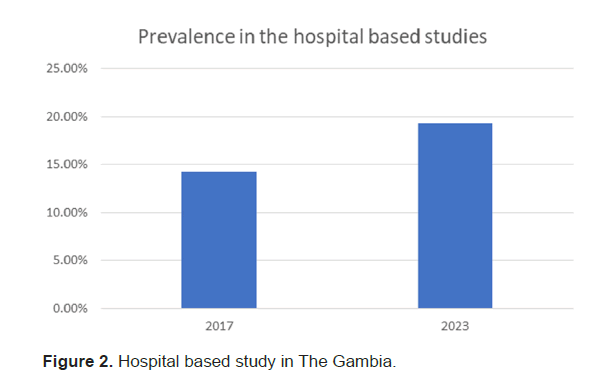
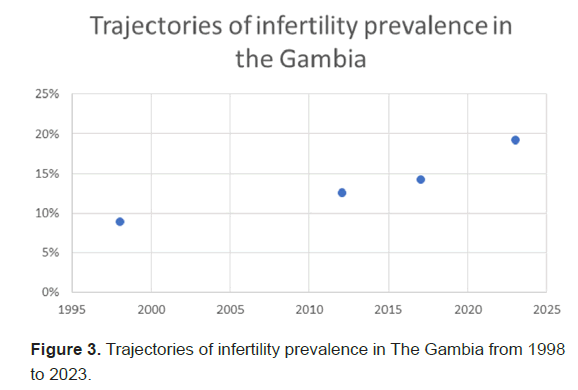

 ) primary, (
) primary, ( ) Secondary
) Secondary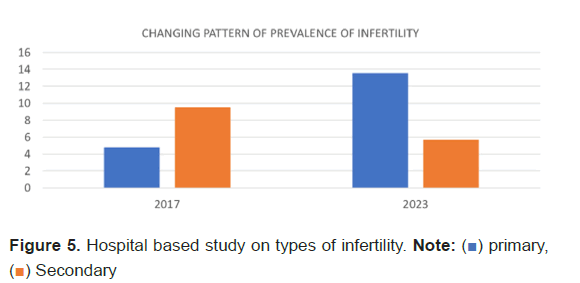
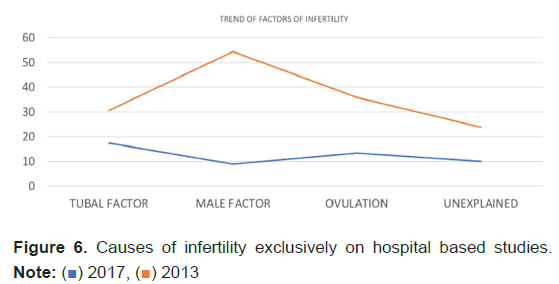
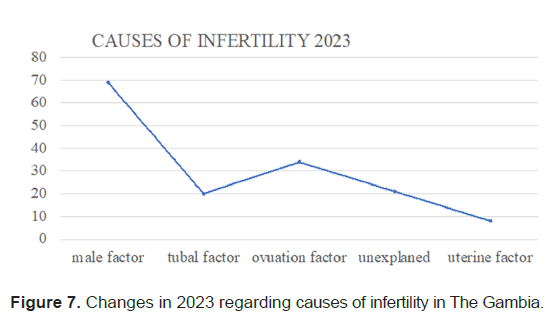



 The Annals of Medical and Health Sciences Research is a monthly multidisciplinary medical journal.
The Annals of Medical and Health Sciences Research is a monthly multidisciplinary medical journal.